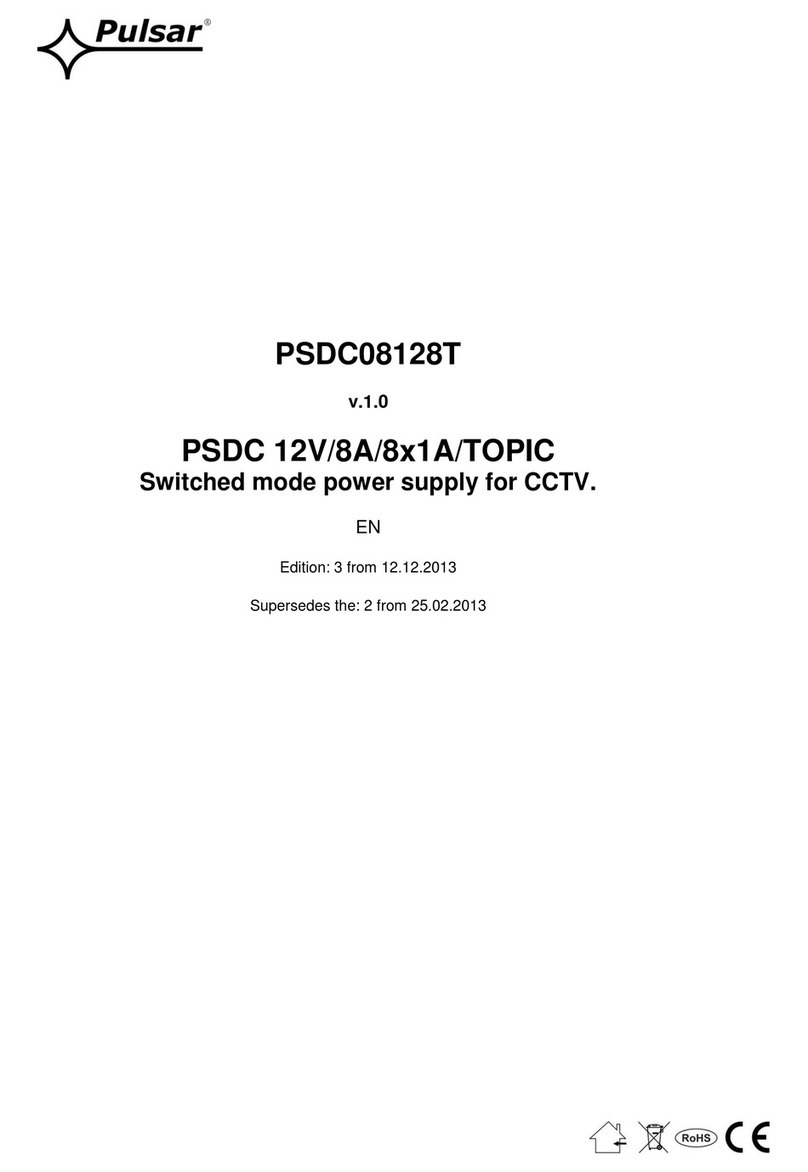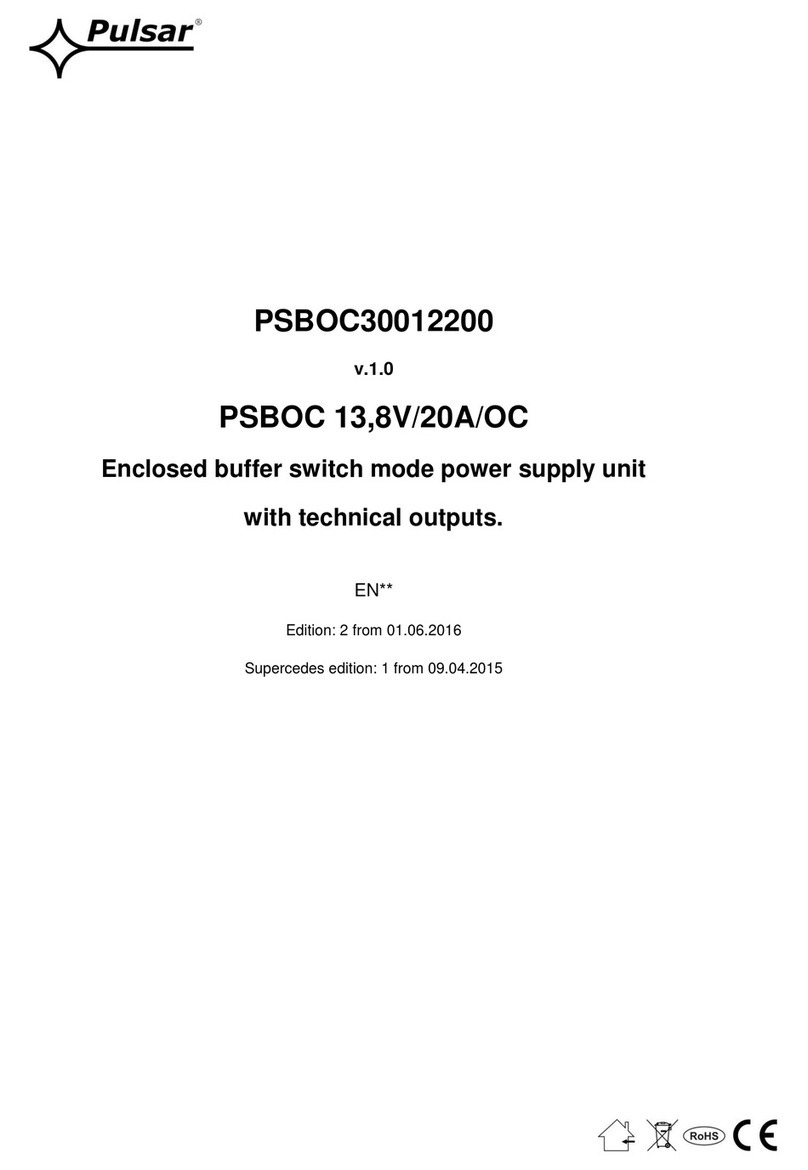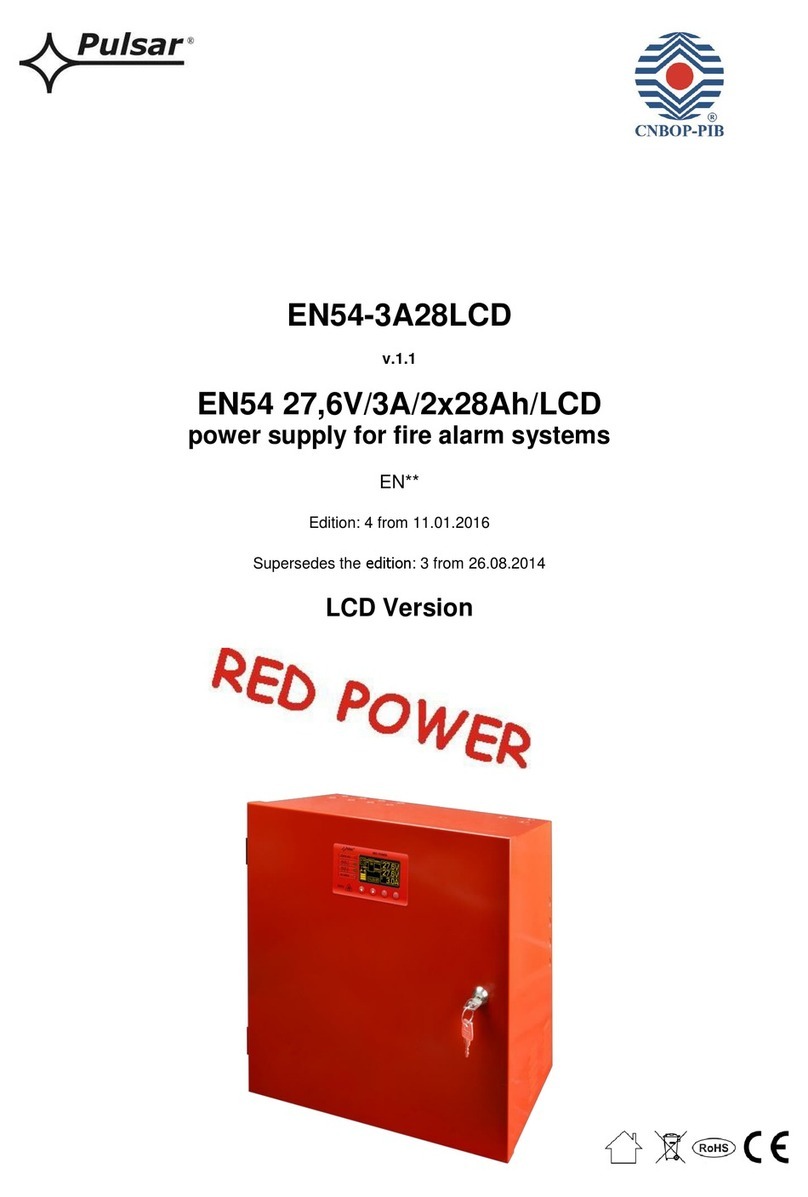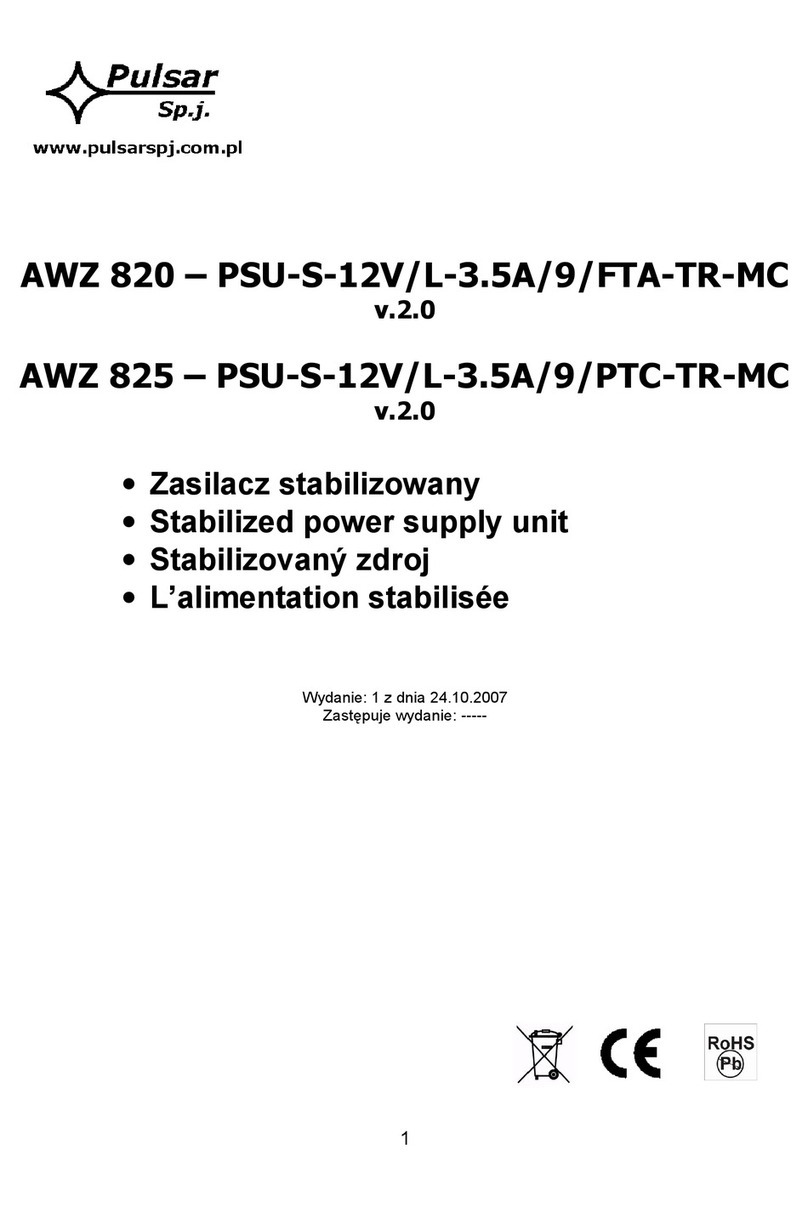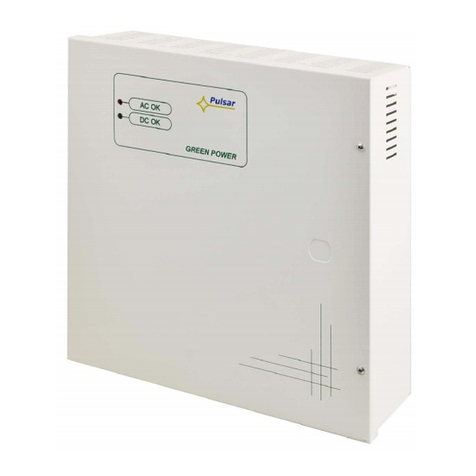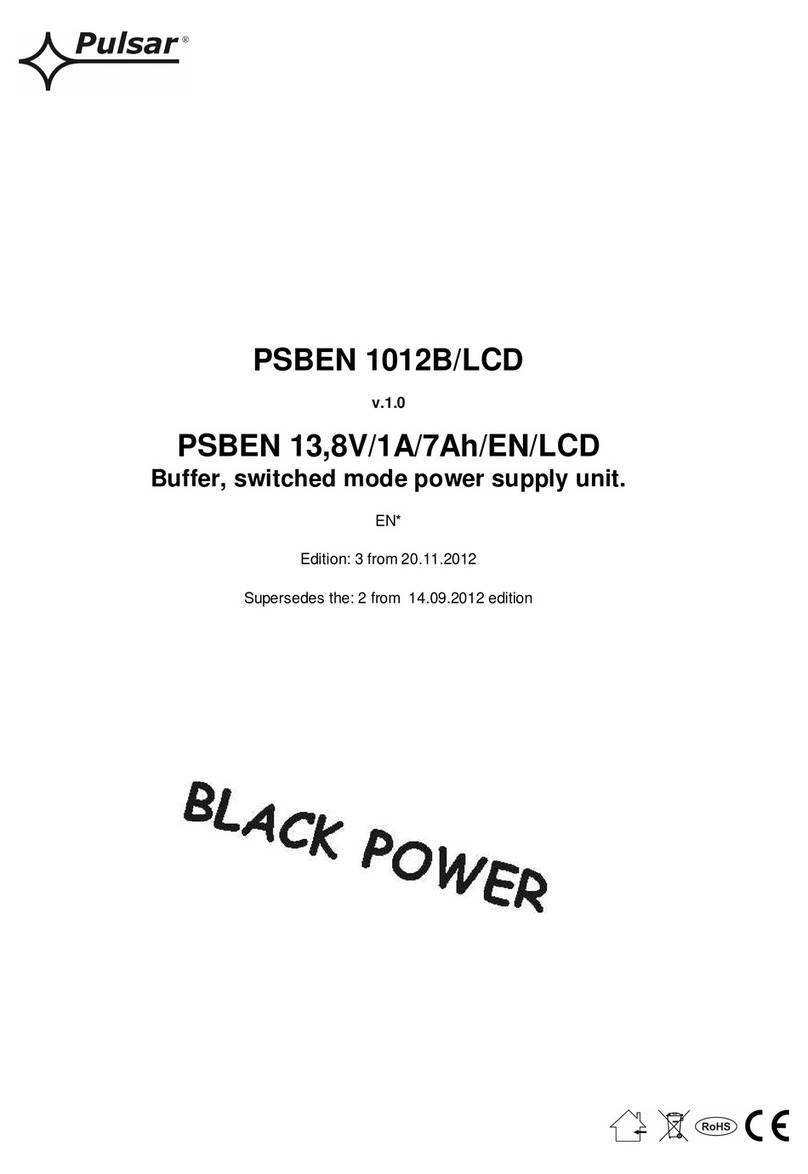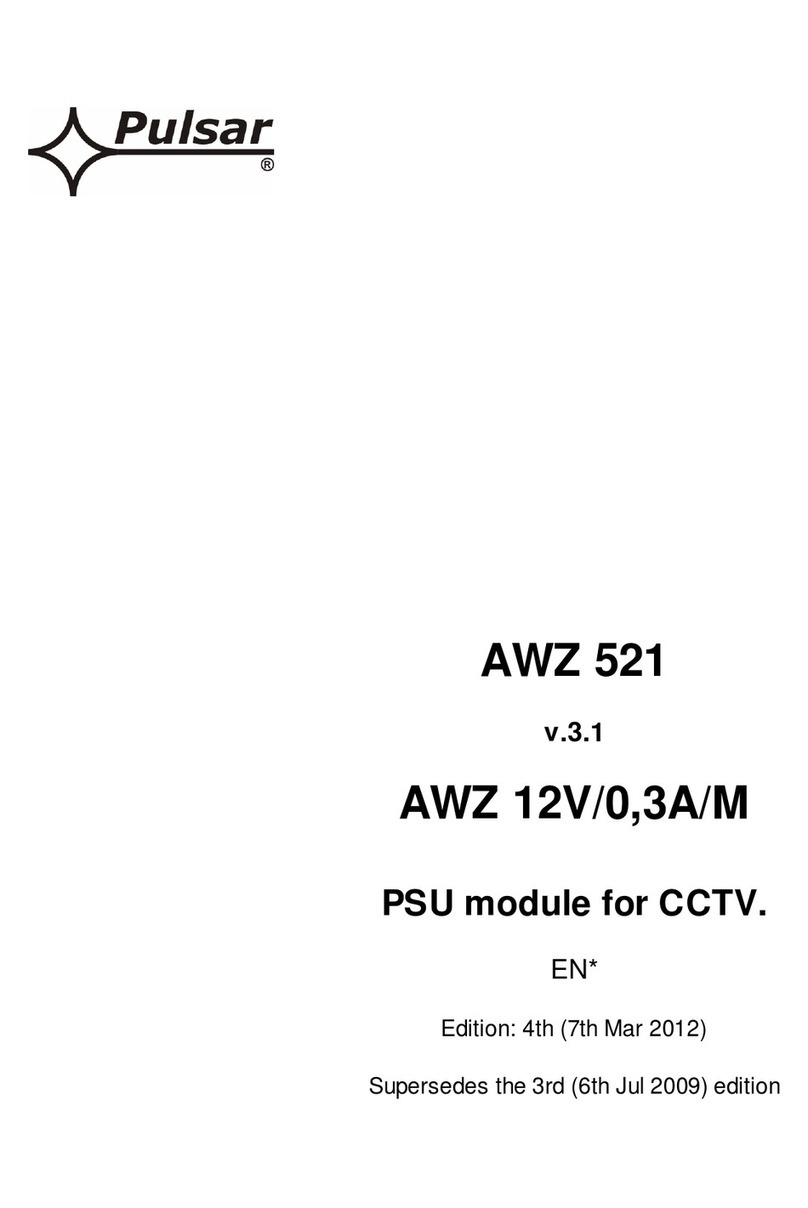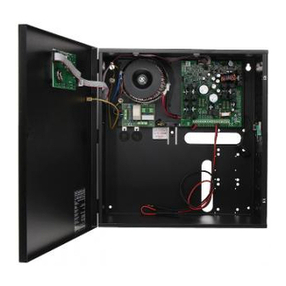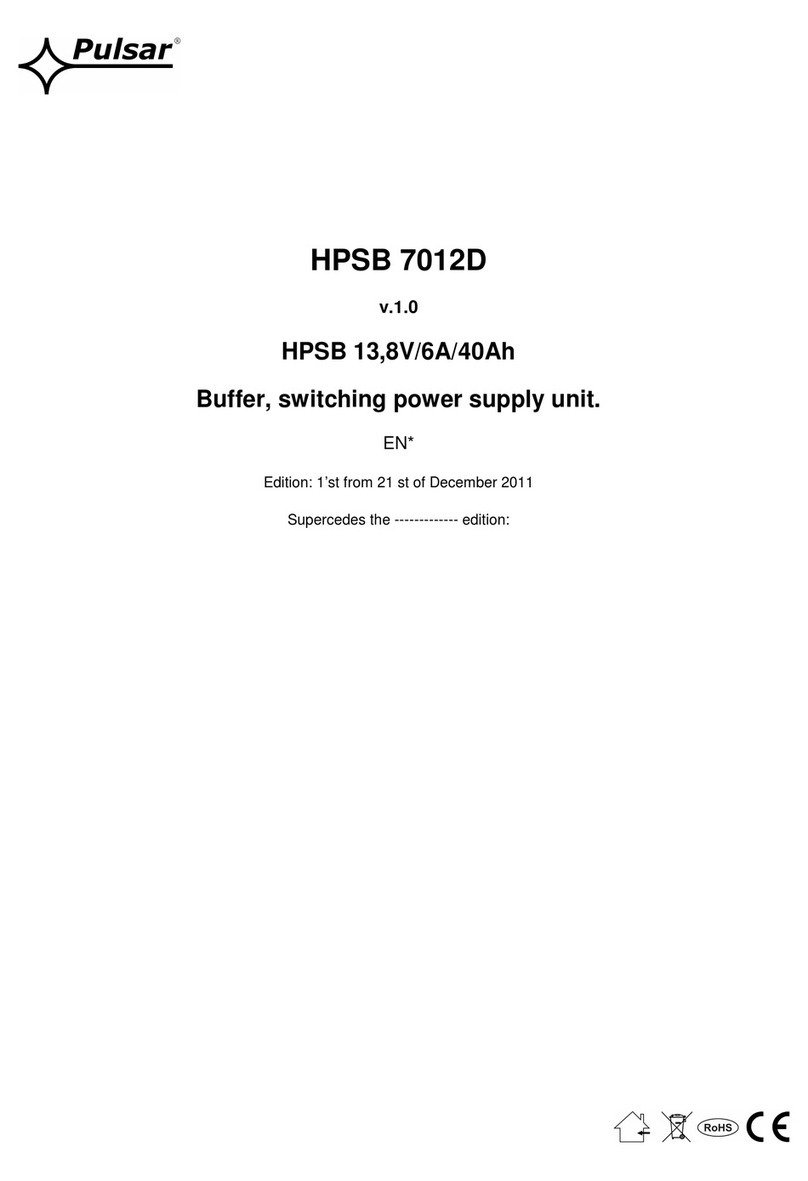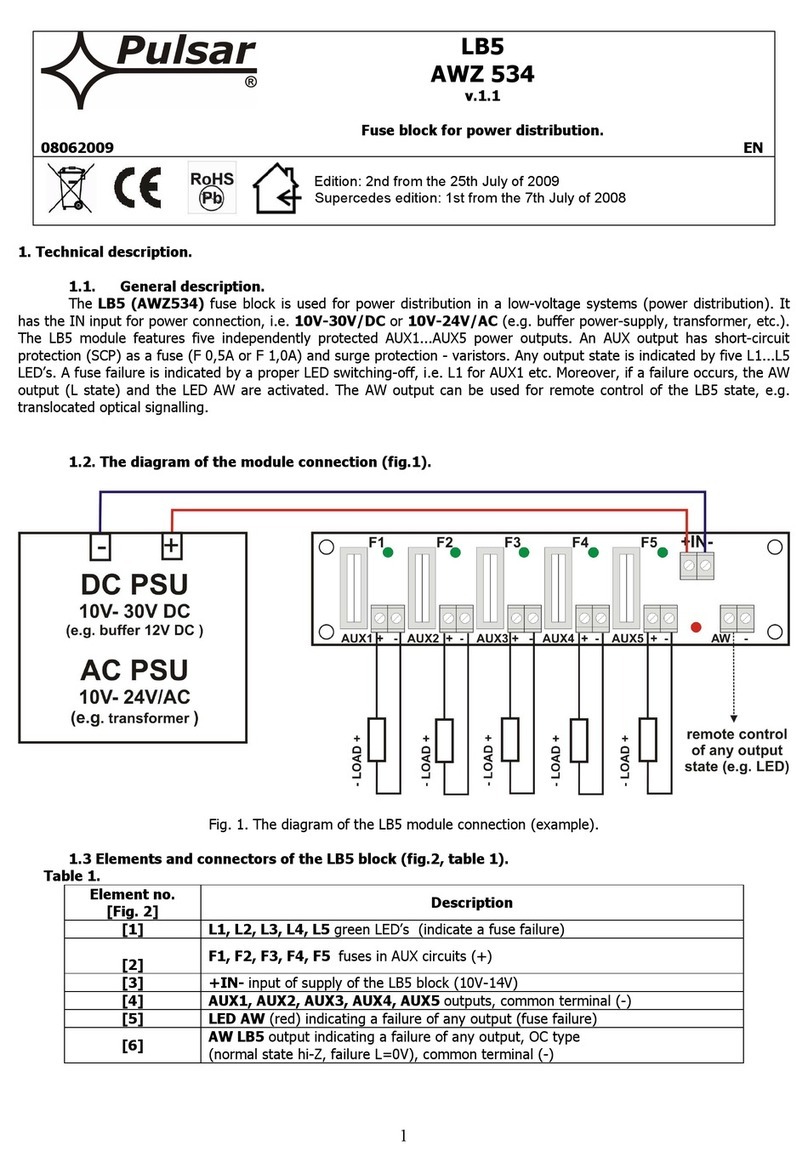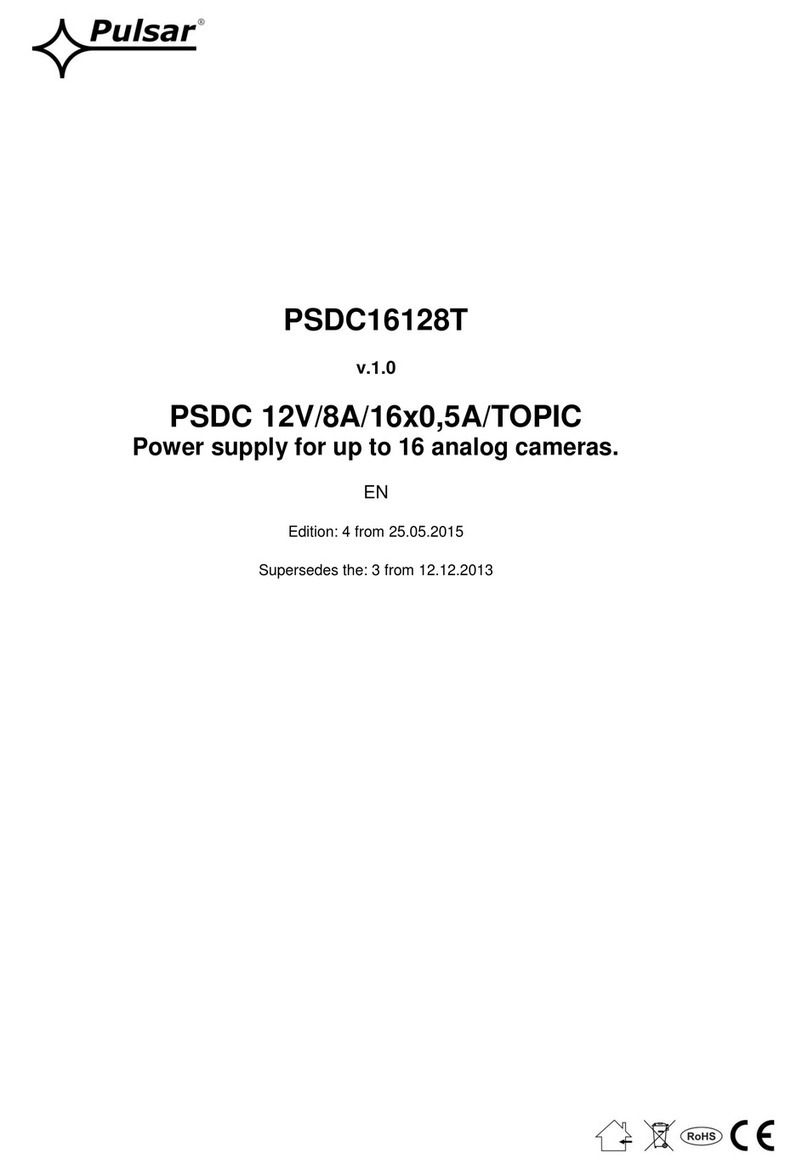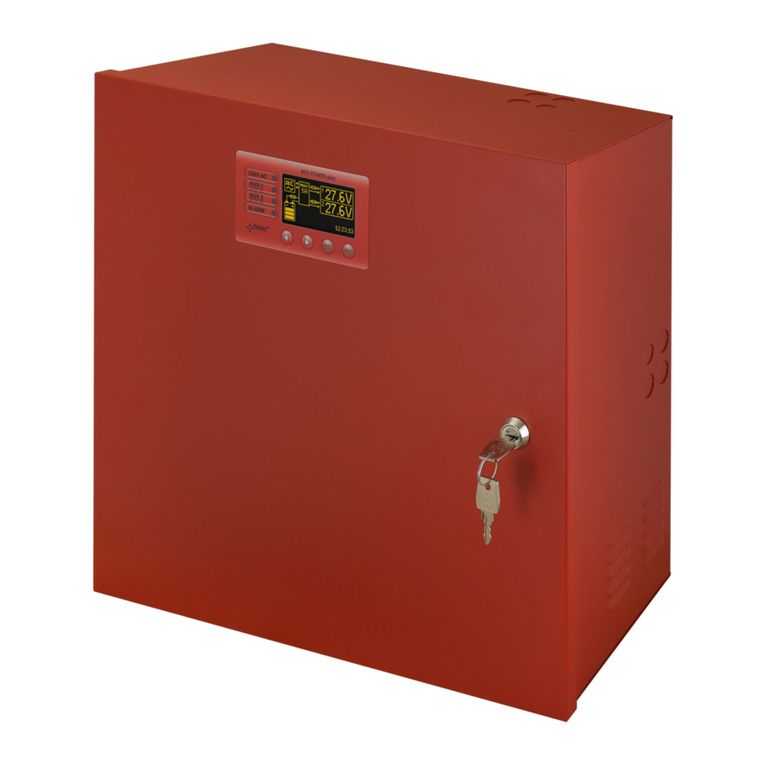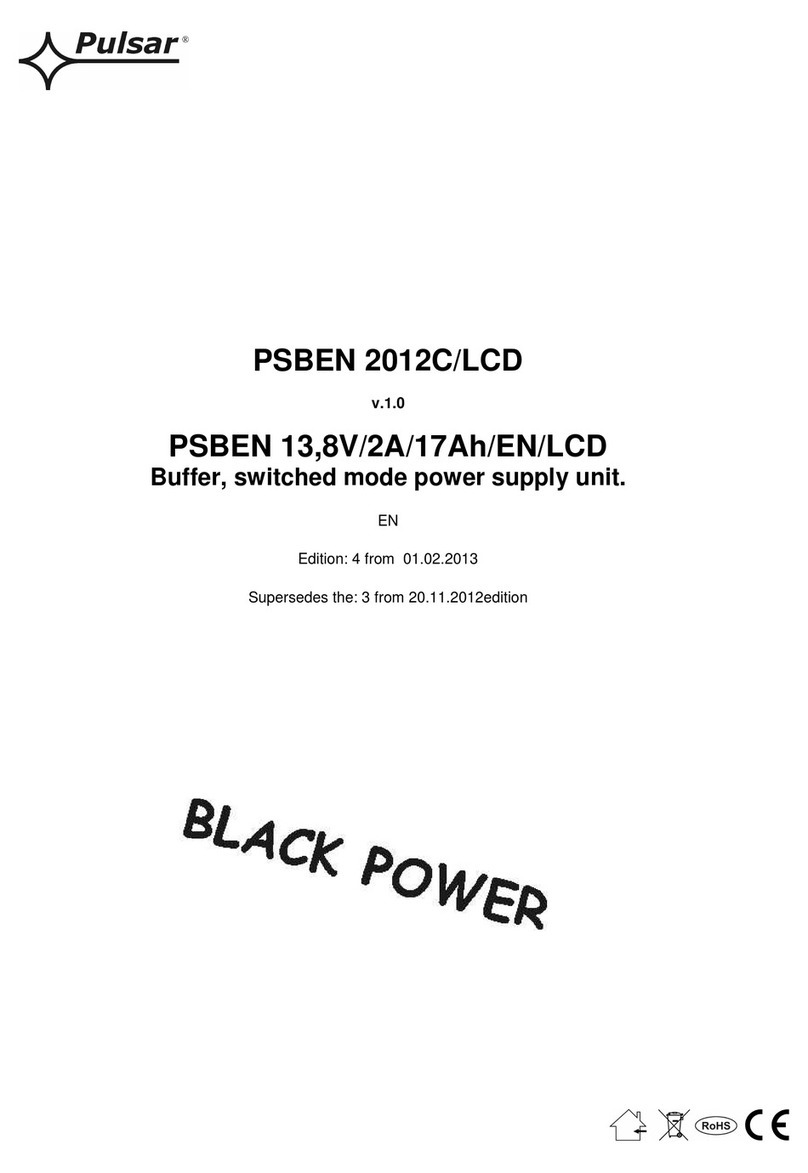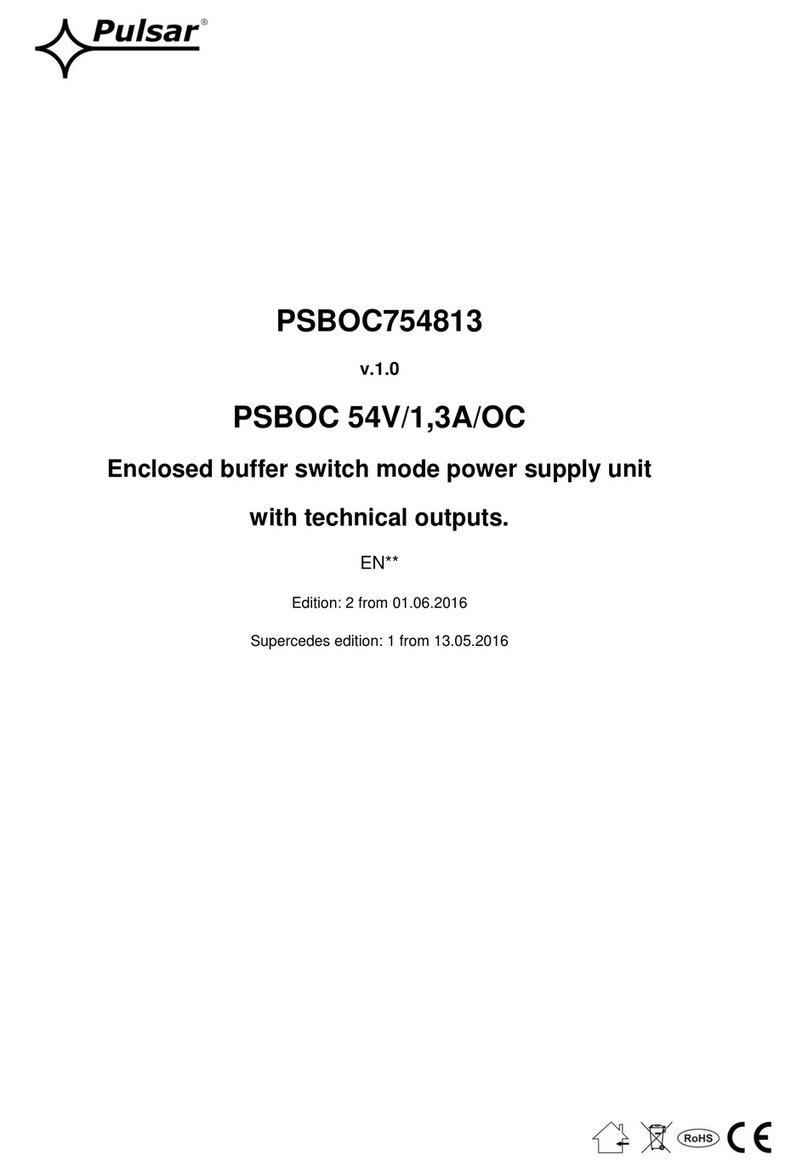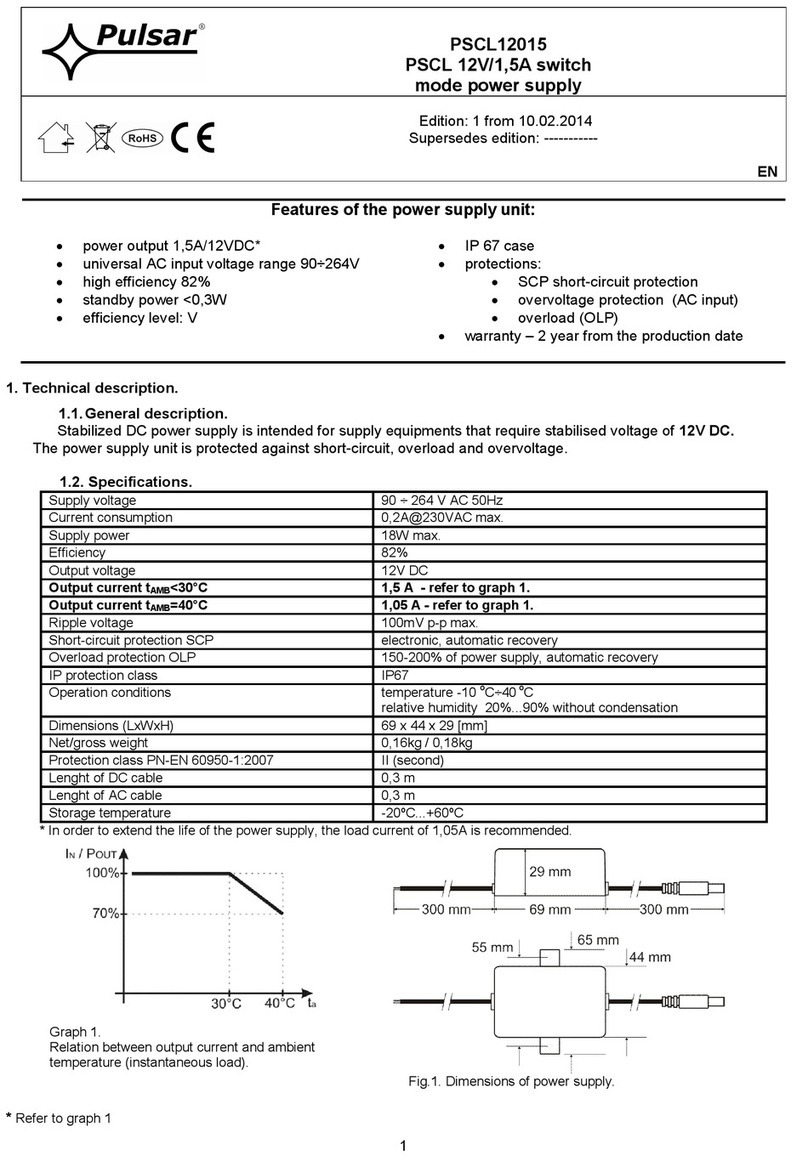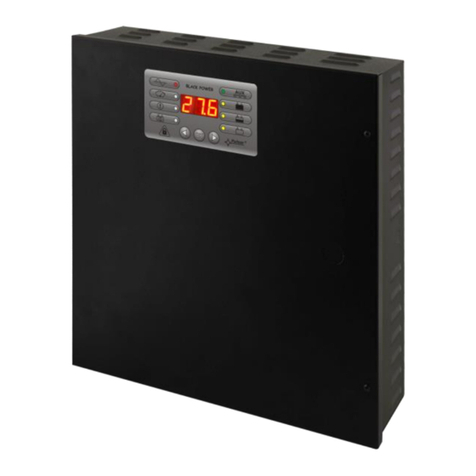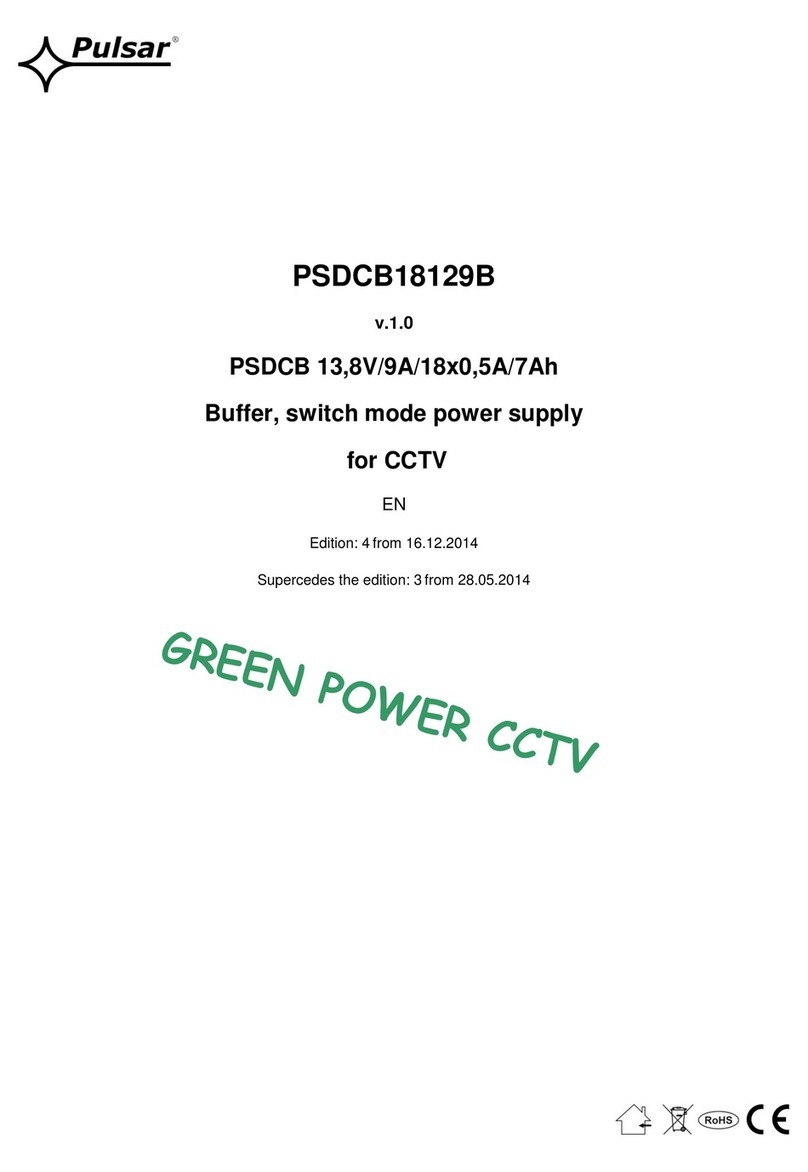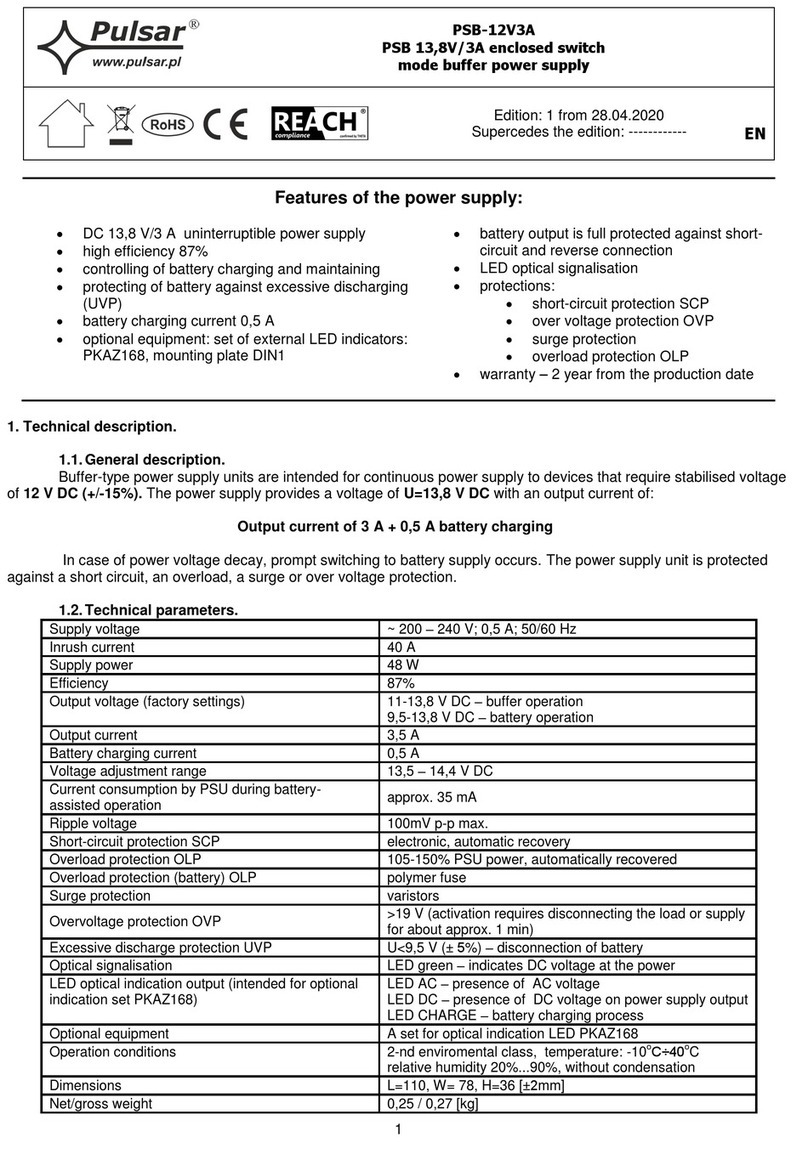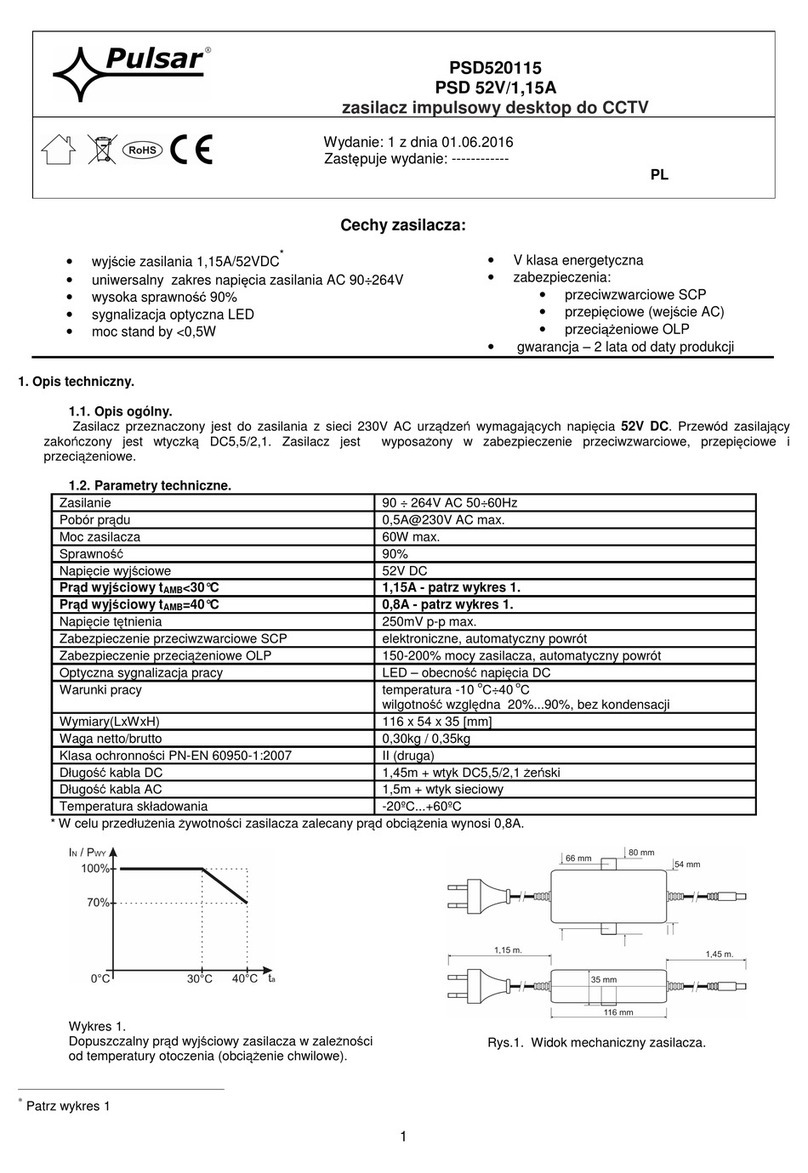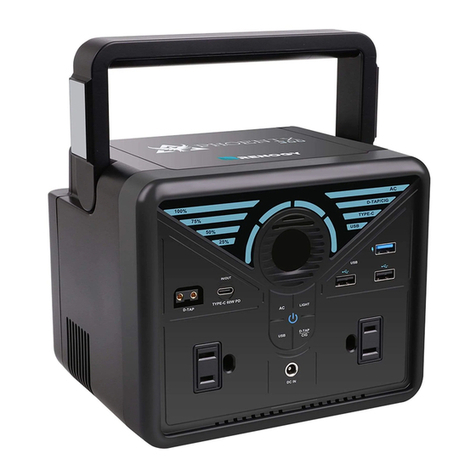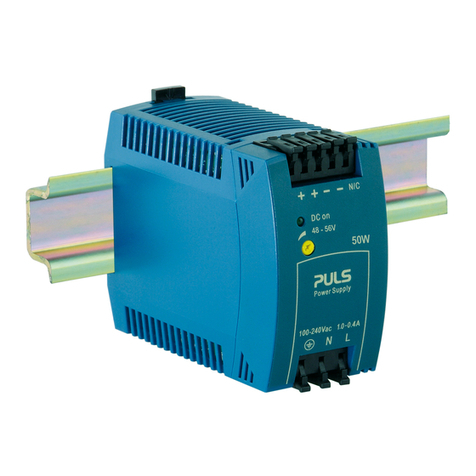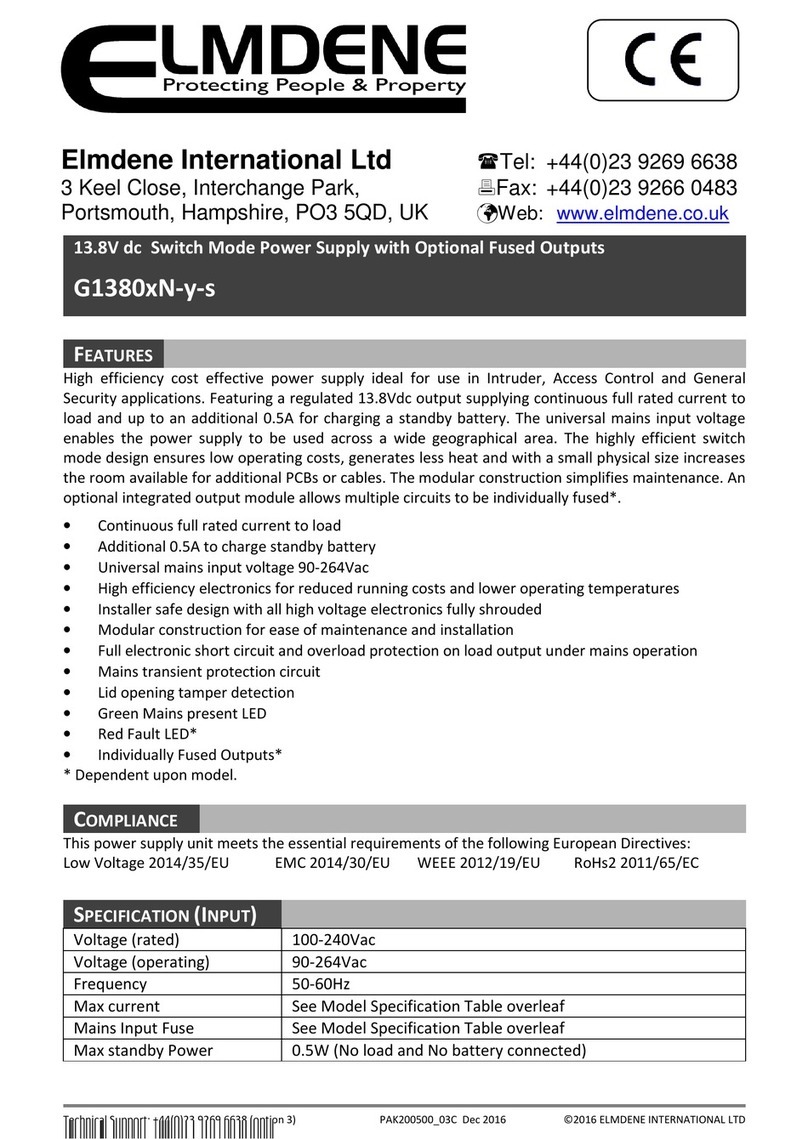
2. Installation.
2.1 Requirements.
Buffer power supply is designed to be installed only by qualified installer with necessary permits and
authorisations (required in installation country) to connect (interfere) with the 230 V mains supply. The unit should be
mounted in confined spaces, in accordance with the II environmental class, with normal relative humidity (RH=90%
maximum, without condensing) and temperature from -10°C to +40°C. The PSU shall work in a vertical position that
guarantees sufficient convectional air-flow through ventilating holes of the enclosure.
The unit should be mounted in a metal enclosure (cabinet) in a vertical position so as to ensure free, convection
air flow through the vents. In order to meet the EU requirements, follow the guidelines on: power supply, enclosures and
shielding: - according to application.
As power supply is designed for a continuous operation and is not equipped with a power-switch, therefore, an
appropriate overload protection in power supply circuit should be provided. Moreover, the user shall be informed about
the method of unplugging (most frequently through separating and assigning an appropriate fuse in the fuse-box). The
electrical system shall follow valid standards and regulations.
2.2 Installation procedure.
CAUTION!
Before installation, cut off voltage in 230 V power-supply circuit. To switch power off, use an
external switch, in which distance between contacts of all poles in disconnection state is not
less than 3mm.
It is required to install in the supply circuits, in addition to power supply, circuit breaker with 6 A nominal
current.
1. Mount the PSU in a selected location and connect the wires.
2. Connect power cables (~230 V) to L-N clips of PSU. Connect ground wire to clip marked by earth symbol PE .
Use a three-core cable (with a yellow and green protection wire ) to make connection). Lead the power cables
to the relevant terminals of the power supply via an isolation conduit.
Shock protection circuit shall be done with a particular care: yellow and green wire coat
of power cable should be connected to terminal marked with the grounding symbol on PSU
enclosure. Operation of PSU without the properly made and fully operational shock protection
circuit is UNACCEPTABLE! It can cause damage to equipment or an electric shock.
3. If needed, connect the device cables to the technical outputs:
- EPS; technical output of AC network absence indication
- APS; technical output indicating battery failure
- FPS; technical output indicating
4. Connect equipment to the appropriate output terminals of power supply (positive connector +V, negative
connector -V).
5. Use the IBAT jumper to set the maximum battery charging current, taking into account charging capacity and
required charging time.
6. Mount battery(s) in the battery compartment of enclosure. Connect the batteries with the PSU paying special
attention to the correct polarity.
7. Switch on 230 V supply. LEDs on the PCB of power supply should light. Optionally, you can install additional
PKAZ168 signaling module (chapter 3.1). After installing and checking proper working, enclosure can be closed.
Output voltage of the PSU, without load U = 13,8 V DC.
During battery charge, voltage can amount to U = 11 - 13,8 V DC.
8. Run PSU test: check LED and acoustic indication (see section 3.1) and technical output; through:
- cutting off 230 V current: LED AC go out, EPS technical outputs will change status into opposite after about
30s
-battery disconnection: APS technical output will change status after a battery test have been completed
(~5min) and red APS LED lights up
- dismantling of one of AUX fuses: red FPS LED lights up, FPS technical output will change status
3. Operating status indication.
The power supply unit features LED status indication.
